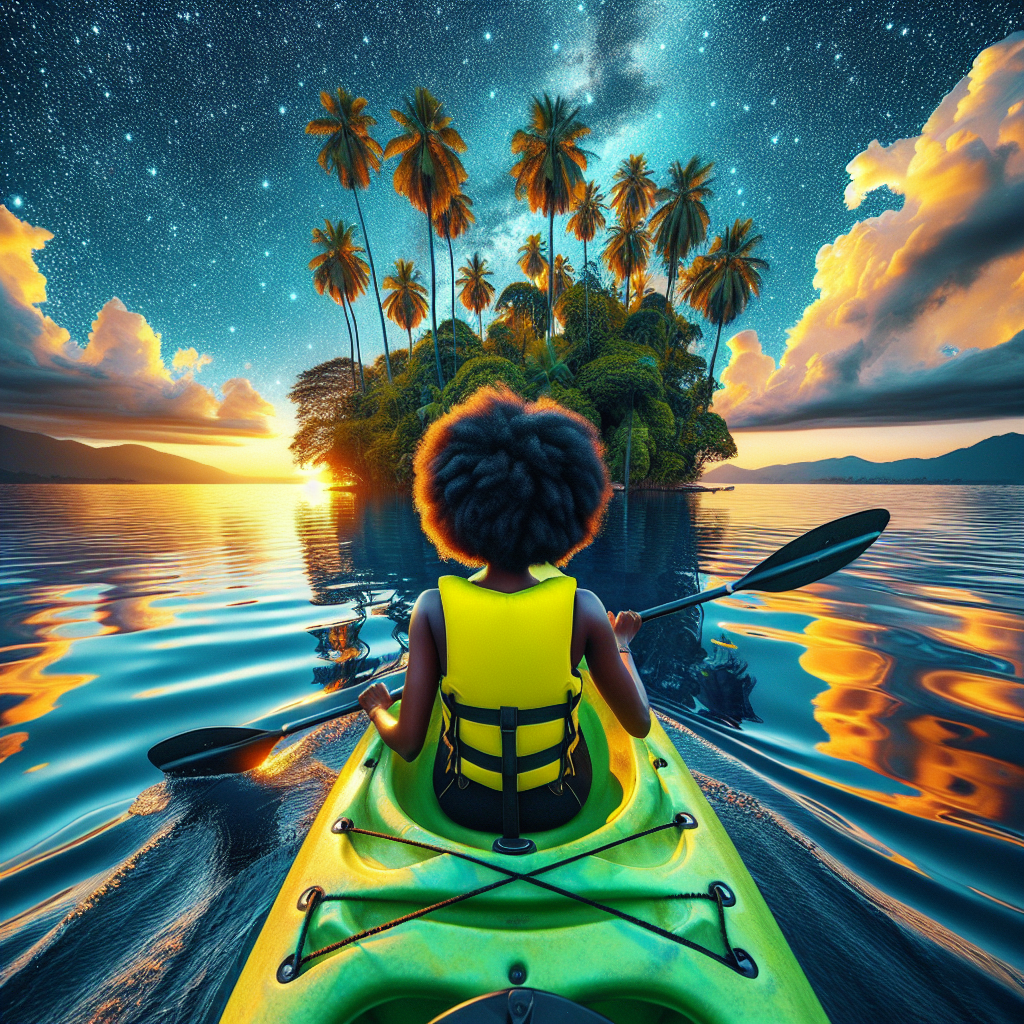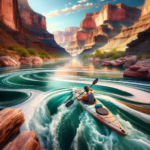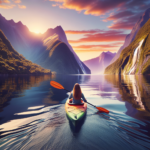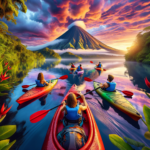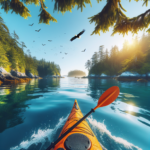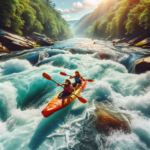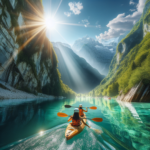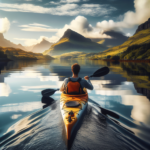Kayaking in Lake Malawi, Malawi
Introduction to Kayaking
Kayaking is an exhilarating outdoor activity that has gained immense popularity worldwide. It offers a unique blend of adventure, exercise, and a close connection with nature. Whether you’re paddling through serene lakes, navigating swift rivers, or exploring coastal waters, kayaking provides a thrilling experience that appeals to both beginners and seasoned adventurers. The sport’s versatility and accessibility make it a favorite among outdoor enthusiasts.
In this article, we will spotlight the unique features of Kayaking in Lake Malawi, Malawi, a destination that stands out for its breathtaking scenery and diverse aquatic life. We’ll explore why this location is a must-visit for kayaking enthusiasts and provide detailed information to help you plan your trip. From the best spots to kayak to safety regulations and environmental considerations, we’ve got you covered.
Kayaking in Lake Malawi, Malawi offers a unique experience that combines the thrill of paddling with the opportunity to explore one of Africa’s most stunning natural landscapes. Known for its crystal-clear waters and vibrant marine life, Lake Malawi is a kayaker’s paradise. Whether you’re looking for a challenging adventure or a peaceful paddle, this destination has something for everyone.
So, let’s dive into the world of Kayaking in Lake Malawi, Malawi, and discover what makes it such a fantastic destination for kayaking enthusiasts. From its geographical features to the best times to visit, we’ll provide you with all the information you need to make the most of your kayaking adventure.
Overview of Kayaking in Lake Malawi, Malawi
Lake Malawi, also known as Lake Nyasa, is the third-largest lake in Africa and the ninth-largest in the world. It stretches over 580 kilometers and is bordered by Malawi, Mozambique, and Tanzania. The lake’s geography is characterized by its deep, clear waters and diverse ecosystems, making it an ideal location for kayaking. The surrounding landscape includes sandy beaches, rocky cliffs, and lush vegetation, providing a picturesque backdrop for your kayaking adventure.
The climate around Lake Malawi is tropical, with a wet season from November to April and a dry season from May to October. The best time to visit for kayaking is during the dry season when the weather is more predictable, and the water conditions are calmer. The lake’s warm temperatures make it a year-round destination, but the dry season offers the most favorable conditions for water sports.
Historically, Lake Malawi has been a vital resource for the local communities, providing food, transportation, and recreation. While kayaking is a relatively new activity in the region, it has quickly gained popularity among both locals and tourists. The lake’s clear waters and abundant marine life make it an attractive destination for water sports enthusiasts.
Visitors can access Lake Malawi through various entry points, with the most popular being the town of Monkey Bay and the city of Mangochi. Both locations offer easy access to the lake and have facilities for renting kayaks and other water sports equipment. Whether you’re planning a day trip or an extended stay, Lake Malawi is easily accessible and offers a range of amenities to make your visit enjoyable.
Kayaking Conditions in Lake Malawi, Malawi
Lake Malawi is renowned for its calm and clear waters, making it an ideal location for kayaking. The lake’s vast expanse provides a variety of kayaking conditions, from tranquil bays to more challenging open waters. The water is generally warm, with temperatures ranging from 24°C to 29°C, making it comfortable for paddling year-round.
The weather conditions around Lake Malawi are influenced by its tropical climate. During the dry season, from May to October, the weather is typically sunny and dry, with minimal rainfall. This period offers the best conditions for kayaking, as the water is calm and visibility is excellent. The wet season, from November to April, brings more unpredictable weather, with occasional storms and rougher waters.
One of the unique features of Lake Malawi is its lack of significant tides, which makes it easier for kayakers to navigate. However, it’s essential to be aware of the lake’s currents, especially in the open water areas. While the currents are generally mild, they can become stronger during windy conditions, so it’s crucial to stay informed about the weather forecast and plan your kayaking trips accordingly.
Environmental factors such as water clarity and underwater visibility are also important considerations for kayakers. Lake Malawi is known for its crystal-clear waters, which provide excellent visibility for exploring the underwater world. The lake is home to over 1,000 species of fish, many of which are endemic, making it a fascinating destination for those interested in marine life.
Top Spots for Kayaking in Lake Malawi, Malawi
One of the top spots for kayaking in Lake Malawi is Cape Maclear, located on the southern shore of the lake. This area is part of the Lake Malawi National Park and offers stunning scenery, including rocky outcrops, sandy beaches, and clear waters. Cape Maclear is also known for its rich biodiversity, making it an excellent spot for wildlife enthusiasts. The best time to kayak here is during the early morning or late afternoon when the water is calm and the light is perfect for photography.
Another popular kayaking destination is Likoma Island, situated in the northeastern part of the lake. Likoma Island is known for its pristine beaches, crystal-clear waters, and vibrant marine life. The island’s remote location makes it a peaceful and secluded spot for kayaking. The best time to visit Likoma Island for kayaking is during the dry season when the weather is stable, and the water conditions are ideal.
For those seeking a more challenging kayaking experience, the northern shores of Lake Malawi offer rugged landscapes and open waters. The area around Nkhata Bay is particularly popular among experienced kayakers. Nkhata Bay features rocky cliffs, hidden coves, and deep waters, providing a more adventurous paddling experience. The best time to kayak in this area is during the dry season when the weather is more predictable.
Lastly, the southern end of Lake Malawi near Monkey Bay is another excellent spot for kayaking. This area offers a mix of calm bays and open waters, making it suitable for both beginners and experienced kayakers. The scenic beauty of Monkey Bay, with its sandy beaches and lush vegetation, adds to the overall kayaking experience. The best time to kayak here is during the early morning or late afternoon when the water is calm and the temperatures are pleasant.
Safety and Regulations
When kayaking in Lake Malawi, it’s essential to adhere to local safety regulations and guidelines to ensure a safe and enjoyable experience. One of the primary safety measures is wearing a life jacket at all times while on the water. Life jackets provide buoyancy and can be a lifesaver in case of an emergency. It’s also important to check the weather forecast before heading out and avoid kayaking during storms or rough conditions.
Another crucial safety consideration is staying within designated kayaking areas and avoiding restricted zones. Some parts of Lake Malawi may have strong currents or underwater hazards, so it’s essential to follow local guidelines and stay informed about potential risks. Additionally, it’s advisable to kayak with a buddy or in a group, especially if you’re unfamiliar with the area.
Emergency preparedness is also vital when kayaking in Lake Malawi. Carrying a waterproof communication device, such as a mobile phone or a marine radio, can be helpful in case of emergencies. It’s also a good idea to inform someone onshore about your kayaking plans and estimated return time. This way, they can alert authorities if you don’t return as expected.
Lastly, it’s important to respect the local environment and wildlife while kayaking. Avoid disturbing marine life and refrain from littering in the lake. Following eco-friendly practices not only ensures your safety but also helps preserve the natural beauty of Lake Malawi for future generations to enjoy.
Amenities and Accommodations
Lake Malawi offers a range of amenities to make your kayaking adventure enjoyable and convenient. Several rental facilities around the lake provide kayaks, paddles, and safety gear for visitors. These rental shops often offer guided tours, which can be a great way to explore the lake with the help of experienced guides. Whether you’re a beginner or an experienced kayaker, guided tours can enhance your experience by providing local insights and ensuring your safety.
Accommodation options around Lake Malawi cater to various preferences and budgets. From camping sites to luxury lodges, there’s something for everyone. For those who prefer a more rustic experience, camping sites near the lake offer a chance to immerse yourself in nature. Many of these sites have basic facilities such as restrooms and cooking areas, making them suitable for outdoor enthusiasts.
If you prefer more comfort, several hotels and lodges around Lake Malawi offer a range of amenities, including restaurants, swimming pools, and spa services. These accommodations provide a relaxing retreat after a day of kayaking and allow you to enjoy the scenic beauty of the lake in comfort. Some lodges also offer packages that include guided kayaking tours and other water sports activities.
In addition to kayaking, Lake Malawi offers various recreational activities for visitors to enjoy. Snorkeling and scuba diving are popular options, thanks to the lake’s clear waters and diverse marine life. Fishing, hiking, and birdwatching are also available for those who want to explore the area further. With so many activities to choose from, Lake Malawi is an ideal destination for outdoor enthusiasts.
Environmental Considerations
Preserving the natural habitats and wildlife of Lake Malawi is crucial for maintaining its beauty and ecological balance. As a kayaker, you can play a significant role in conservation efforts by following eco-friendly practices. One of the simplest ways to minimize your impact is by avoiding littering and disposing of waste properly. Carry a small bag to collect any trash you generate and dispose of it in designated bins onshore.
Another important consideration is respecting the local wildlife. Lake Malawi is home to numerous species of fish, birds, and other animals, many of which are endemic to the region. Avoid disturbing marine life by maintaining a safe distance and refraining from feeding or touching the animals. Observing wildlife from a distance ensures their safety and allows you to enjoy their natural behavior without causing harm.
Supporting local conservation efforts is another way to contribute to the preservation of Lake Malawi’s natural beauty. Several organizations and projects focus on protecting the lake’s ecosystems and promoting sustainable tourism practices. By participating in these initiatives or making a donation, you can help ensure that future generations can enjoy the same pristine environment.
Lastly, consider using eco-friendly kayaking equipment and practices. Opt for reusable water bottles and containers instead of single-use plastics. Choose biodegradable sunscreen to minimize the impact on the lake’s water quality. By adopting these small changes, you can make a significant difference in preserving the natural beauty of Lake Malawi.
Highlights
When comparing Kayaking in Lake Malawi, Malawi with other popular kayaking destinations, several unique features stand out. One of the most notable aspects is the lake’s incredible biodiversity. Lake Malawi is home to over 1,000 species of fish, many of which are found nowhere else in the world. This rich marine life makes it a fascinating destination for kayakers interested in underwater exploration and wildlife observation.
Geographically, Lake Malawi offers a diverse range of landscapes, from sandy beaches to rocky cliffs and lush vegetation. This variety provides kayakers with different paddling experiences and stunning scenery to enjoy. The lake’s clear waters and excellent visibility also make it an ideal location for snorkeling and scuba diving, adding to its appeal as a water sports destination.
Historically, Lake Malawi has played a significant role in the lives of local communities. The lake has been a source of food, transportation, and recreation for centuries. This cultural connection adds depth to the kayaking experience, allowing visitors to learn about the region’s history and traditions while enjoying their adventure on the water.
In terms of accessibility, Lake Malawi is relatively easy to reach, with several entry points and well-developed facilities for tourists. The availability of rental equipment, guided tours, and various accommodation options makes it a convenient destination for kayakers of all levels. Whether you’re planning a short visit or an extended stay, Lake Malawi offers everything you need for a memorable kayaking experience.
FAQ Section
- What is the best season to go kayaking in Lake Malawi? The best season for kayaking in Lake Malawi is during the dry season, from May to October, when the weather is more predictable, and the water conditions are calmer.
- Are there beginner-friendly spots for kayaking in Lake Malawi? Yes, areas like Cape Maclear and Monkey Bay offer calm waters and are suitable for beginners.
- What should I bring for a kayaking trip in Lake Malawi? Essential items include a life jacket, sunscreen, a hat, a waterproof bag, and plenty of water. It’s also advisable to bring a mobile phone or communication device for emergencies.
- Are kayak rentals available, and what are the costs? Yes, kayak rentals are available at various locations around Lake Malawi. The costs vary depending on the rental facility and the duration of the rental.
- How can I participate in local conservation efforts? You can support local conservation efforts by following eco-friendly practices, avoiding littering, and participating in initiatives organized by local conservation organizations.
- Are guided kayaking tours available, and what do they cover? Yes, guided kayaking tours are available and often cover popular spots around the lake, providing insights into the local wildlife, history, and culture.
- What safety measures are in place for kayaking in Lake Malawi? Safety measures include wearing life jackets, staying within designated areas, checking weather forecasts, and carrying communication devices for emergencies.
Final Thoughts
Kayaking in Lake Malawi, Malawi is a premier destination for kayaking enthusiasts, offering a unique blend of adventure, natural beauty, and rich biodiversity. The lake’s clear waters, diverse landscapes, and abundant marine life make it an ideal location for both beginners and experienced kayakers. By following local guidelines and conservation efforts, you can ensure a safe and enjoyable experience while preserving the natural beauty of this incredible destination.
Whether you’re seeking a peaceful paddle through tranquil bays or an adventurous journey along rugged shores, Lake Malawi has something for everyone. The availability of rental facilities, guided tours, and various accommodation options makes it a convenient and accessible destination for all types of travelers.
As you plan your kayaking adventure in Lake Malawi, remember to respect the local environment and wildlife. By adopting eco-friendly practices and supporting conservation efforts, you can help preserve this stunning natural landscape for future generations to enjoy.
So, pack your gear, embrace the thrill of kayaking, and explore the beauty of Lake Malawi, Malawi. With its breathtaking scenery, diverse marine life, and rich cultural heritage, this destination promises an unforgettable kayaking experience that you’ll cherish for years to come.

